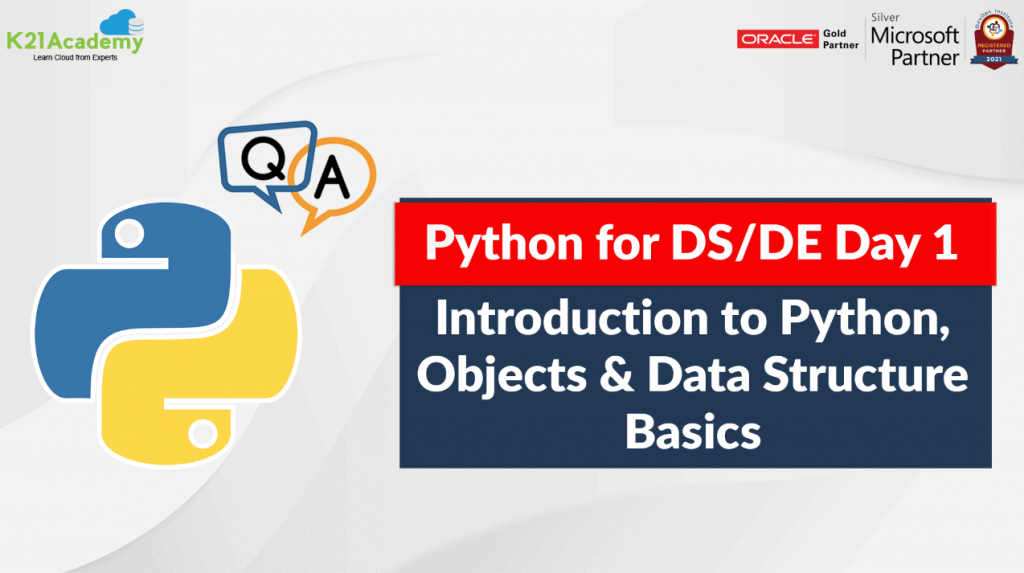
Introduction to Python, Objects and Data Structure Basics Q&A: Day1 Live Session Review
Python
Python is an interpreted, object-oriented, high-level programming language.It has a lot of modules, dynamic typing, very high-level dynamic data types, and classes. It supports multiple programming paradigms beyond object-oriented programming, such as procedural and functional programming.
Main uses of Python:
*Server-side web development
*Software development
*System scripting
*Machine learning & Data Science
Object
An Object is an instance of a Class. A class is like a blueprint while an instance is a copy of the class with actual values.
An object consists of the following three categories :
State Behavior Identity
Data Structures
* List- It is defined as an ordered collection of items. The order of elements is an inherent characteristic that remains constant throughout the life of the list.
Lists are mutable.
* Tuple- A tuple is a built-in data structure in Python that is an ordered collection of objects. Unlike lists, tuples come with limited functionality.
Tuples cannot be modified, added, or deleted once they’ve been created.
* Set- A set is an unordered collection with no duplicate elements. Set objects also support mathematical operations like union, intersection, difference, and symmetric difference.
* Dictionaries- Dictionary is a non-homogeneous data structure that stores key-value pairs and is represented by { }. To know more about these Basic Python Concepts covered in our Day 1 session at https://k21academy.com/pythonday1
I will update the this link Topics that we’ll cover in this blog:
> Introduction to Python
> Objects & Variables
> Data Structure Basics: List, Tuple, Set, Dictionaries
Join our Waitlist to know more about it.

